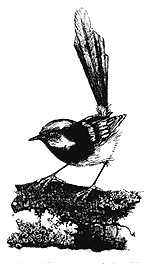|
SUMMARY This proposal covers an area recognised by the Friends of Durras as a long-standing community icon area and as crucial to the creation of a reserve system for the Southern Region of NSW. "Greater Murramarang" refers to an extended Murramarang National Park, covering the coastline from Batemans Bay to Bawley Point on the South Coast of NSW. Greater Murramarang would link two thin sections of Murramarang National Park, and extend them west to the Princes Highway, to make a truly viable National Park for the coastal ecosystems and exceptional biodiversity held within this special stretch of coastline. Greater Murramarang would extend a Park which is 44 kms long, but only a few hundred metres wide and 1,970 hectares in area, by the addition 9,521 hectares of State Forest and approximately 320 hectares which cover Durras Lake. The "Greater" Murramarang National Park would be created by the addition of Kioloa State Forest, Benandarah State Forest east of the Princes Highway, a small section of South Brooman State Forest also east of the Princes Highway, Durras Lake, an area of Vacant Crown Land which adjoins Durras Lake, and the beach and rock areas down to the low tide line. This submission has been prepared by Friends of Durras. The previous National Park proposal prepared by the Total Environment Centre (Coastal Diversity – A Viable Murramarang National Park) in 1985, is acknowledged and supported. Greater Murramarang is both a magnificent stretch of coastline and an area of forest of high conservation value crucial to a regional forest reserve system. It is critical for both forest and coast, to have an extended and truly viable "Greater" Murramarang National Park. The well-known and beautiful Spotted Gum and Burrawang Palm forests that buffer and support the coastal ecosystems of Murramarang contain exceptional biodiversity. They are full of threatened plants and animals that find their best habitat and chance for survival in such near-coastal forest environments.
|
